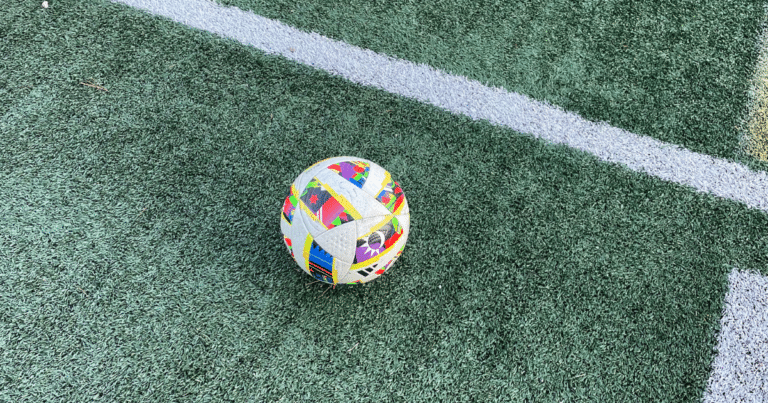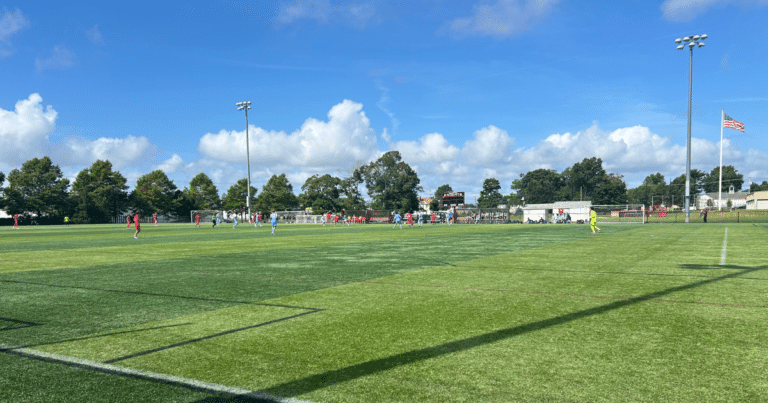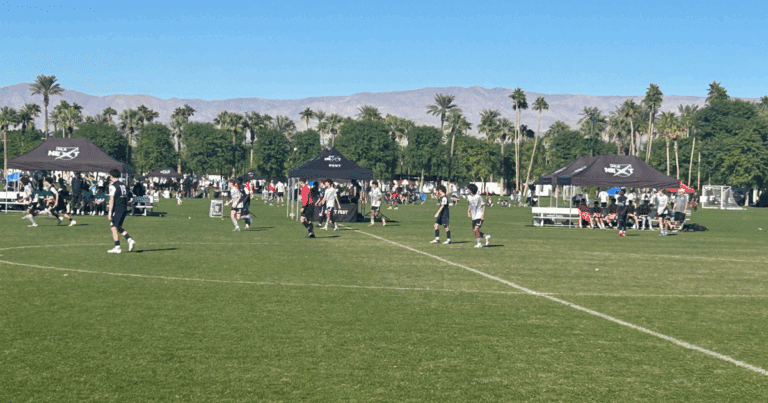Flanks 101: Your Guide to Soccer’s Sidelines
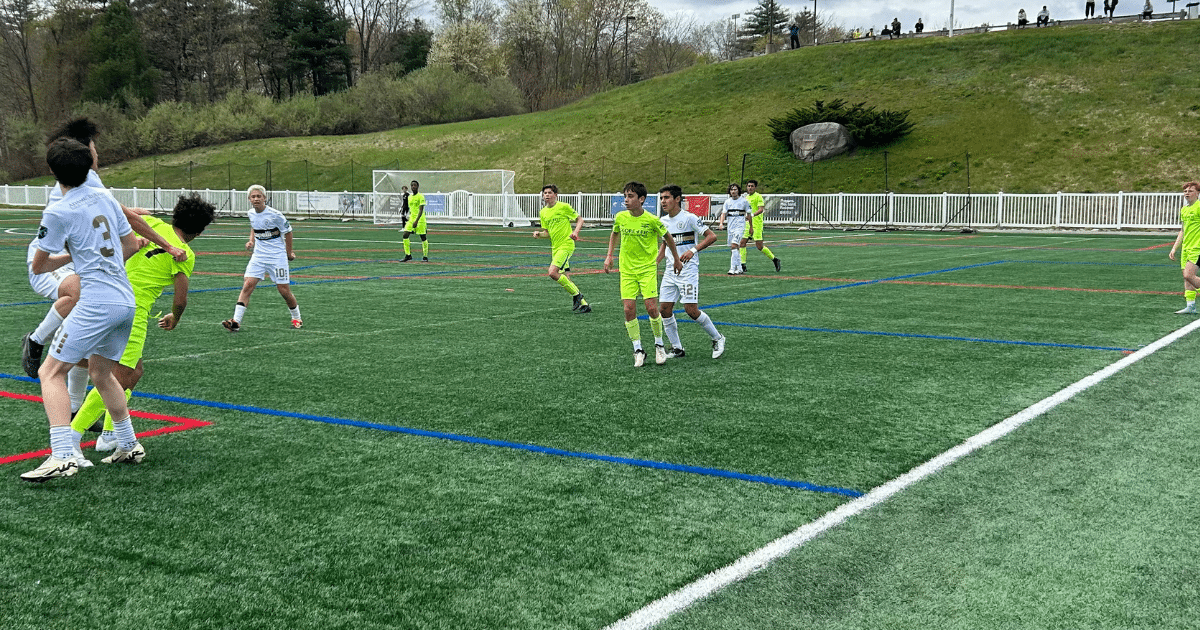
Flank is a term used in soccer to describe the area of the field that is located on either side of the pitch, just beyond the touchline. Most Americans call this part of the field, “the sidelines”.
Key Players and Roles
Wingers are the primary attacking specialists who operate in these areas.
Their role involves advancing the ball along the flanks, delivering crosses into the penalty area for scoring opportunities, and occasionally cutting inward to create direct shooting chances.
Their positioning and movement in these areas are fundamental to stretching defenses and creating attacking width.
Also, the flank is used by fullbacks, who are responsible for defending against opposing left and right wings and preventing them from advancing the ball toward the goal.
Defensive Responsibilities
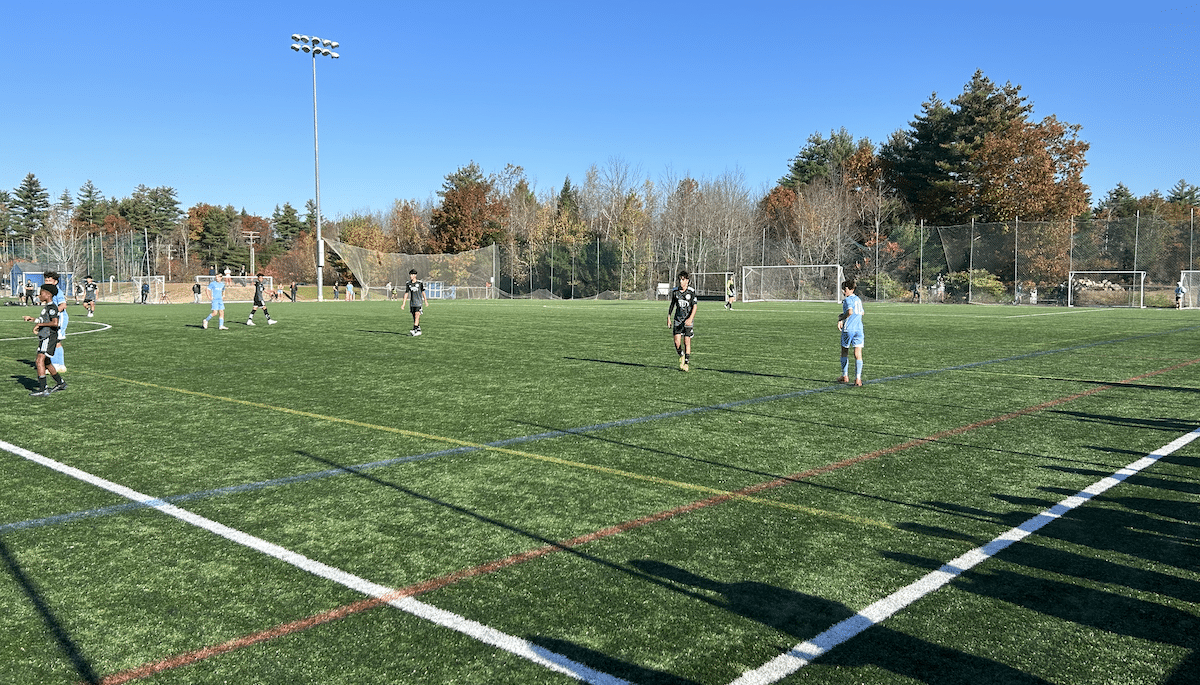
Fullbacks serve as the defensive specialists in flank areas, tasked with neutralizing opposing wingers and preventing attacking progression.
Their positioning and defensive acumen are crucial in maintaining defensive stability while also supporting attacking movements when possession is regained.
Where is Flank on a Soccer Field?
The flank in soccer is the area on either side of the field, just beyond the touchline. Here is a graphic of the area…
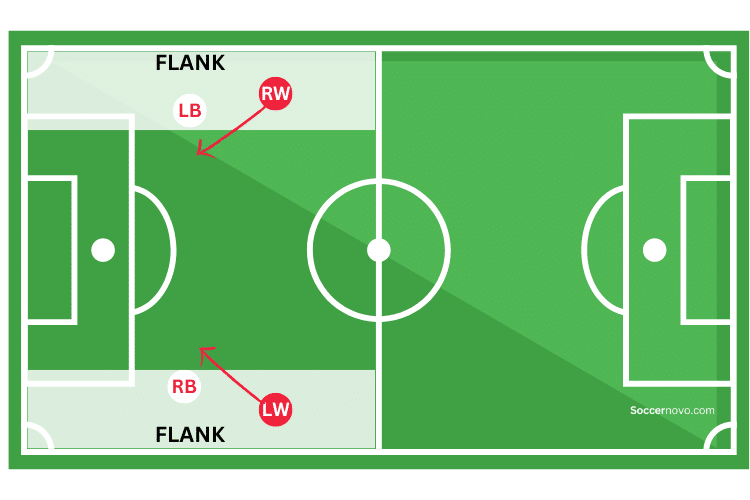
In soccer, the flank is divided into two parts, the attacking flank, and the defensive flank.
- The attacking flank is the area where the team with the ball is trying to create scoring opportunities.
- The defensive flank is the area where (you guessed it) the team without the ball is trying to prevent the other team from creating scoring opportunities.
Tactical Implementation
Modern soccer increasingly emphasizes flank play as a key component of tactical systems. Teams employ various strategies to exploit these areas:
- Creating overloads to generate numerical advantages
- Utilizing quick transitions to exploit space
- Implementing pressing traps to regain possession
- Developing combination plays between fullbacks and wingers
Different teams have their own unique ways of using the flanks. Some teams live and breathe by their wide play, making it the heart of their attacking strategy. Others might only use the flanks when the moment is right, mixing it up with other tactics to keep their opponents guessing.
Understanding how flanks work isn’t just soccer trivia – it’s key to seeing how the sport has evolved and how teams approach the game today!

Written By: SoccerNovo
SoccerNovo is an independent youth soccer media brand built to help parents, players, and coaches better understand the game and the pathways available in U.S. soccer. Our mission is to make youth soccer simpler, clearer, and more accessible for everyone involved in it.
Let’s connect



